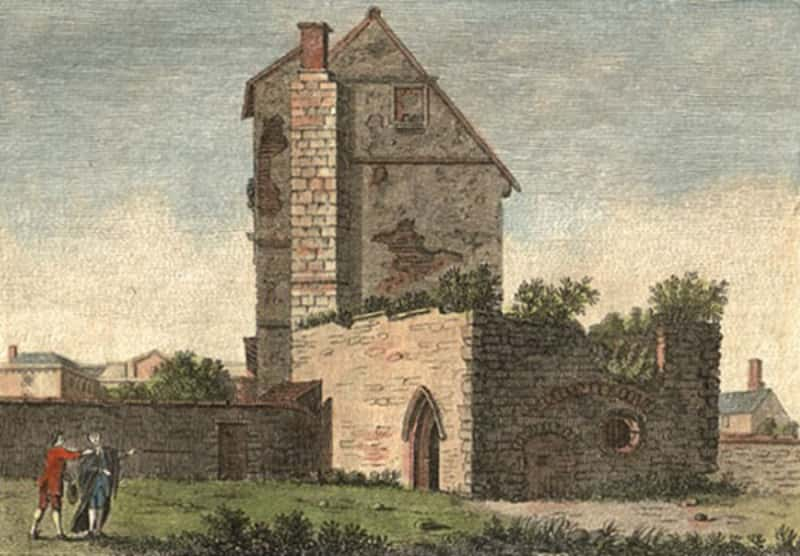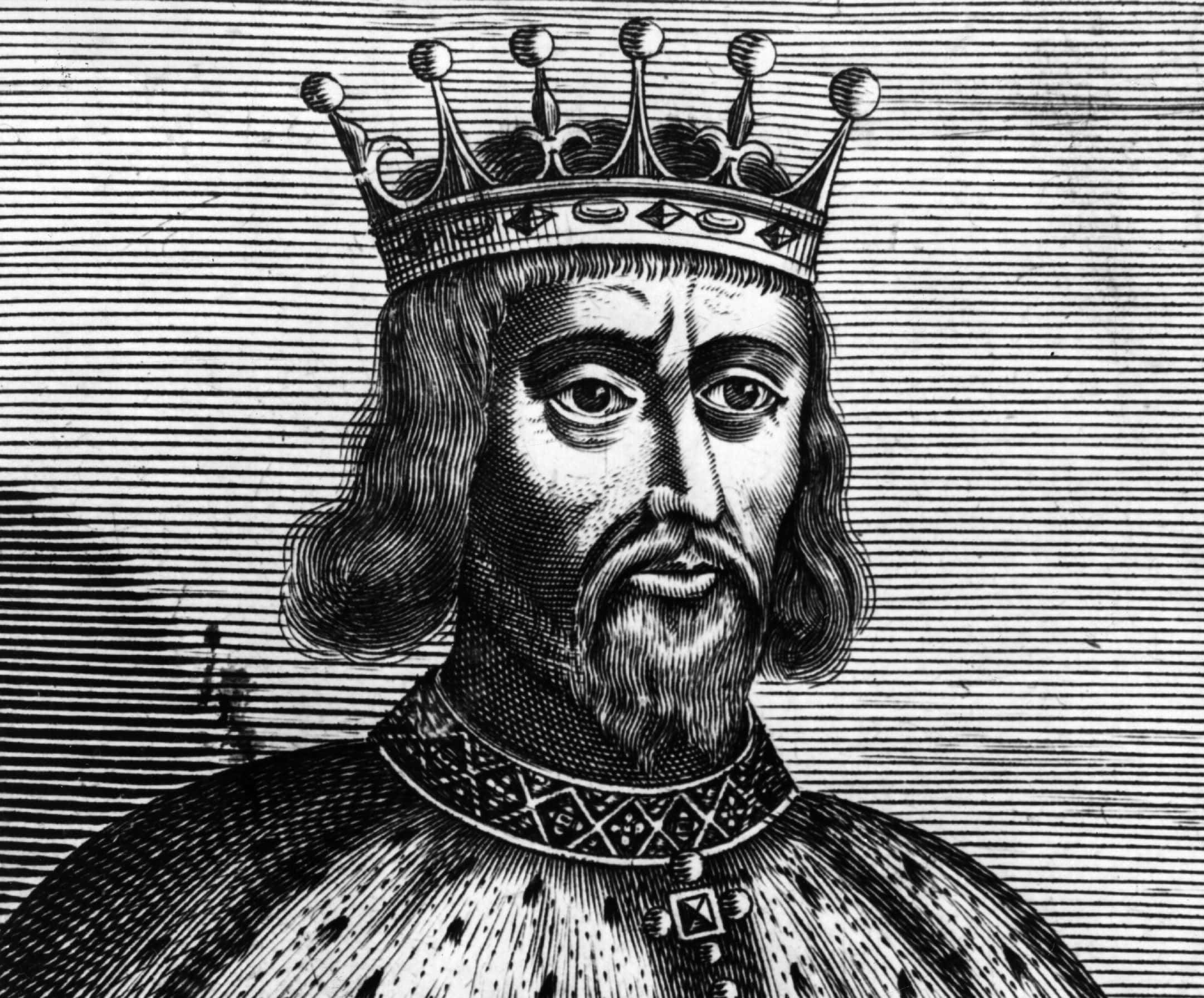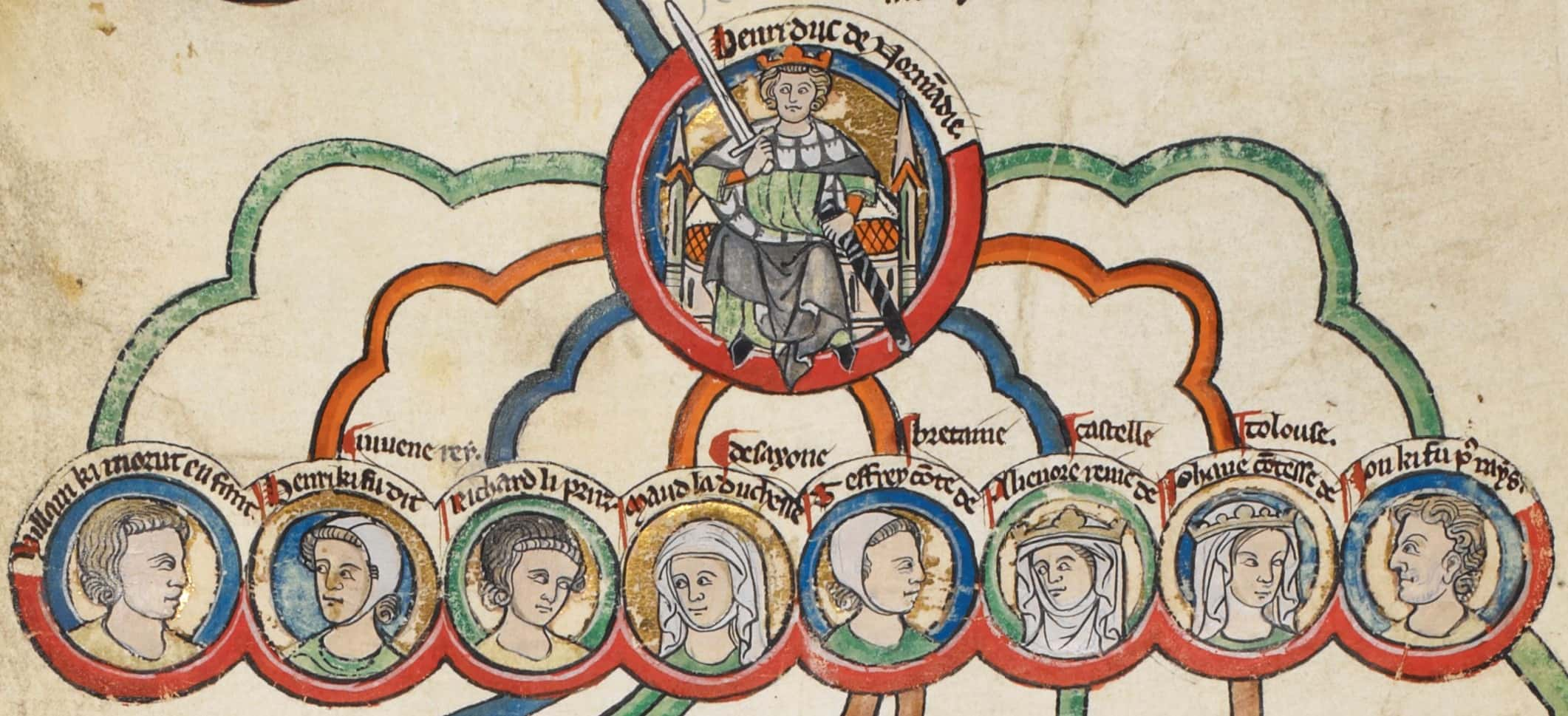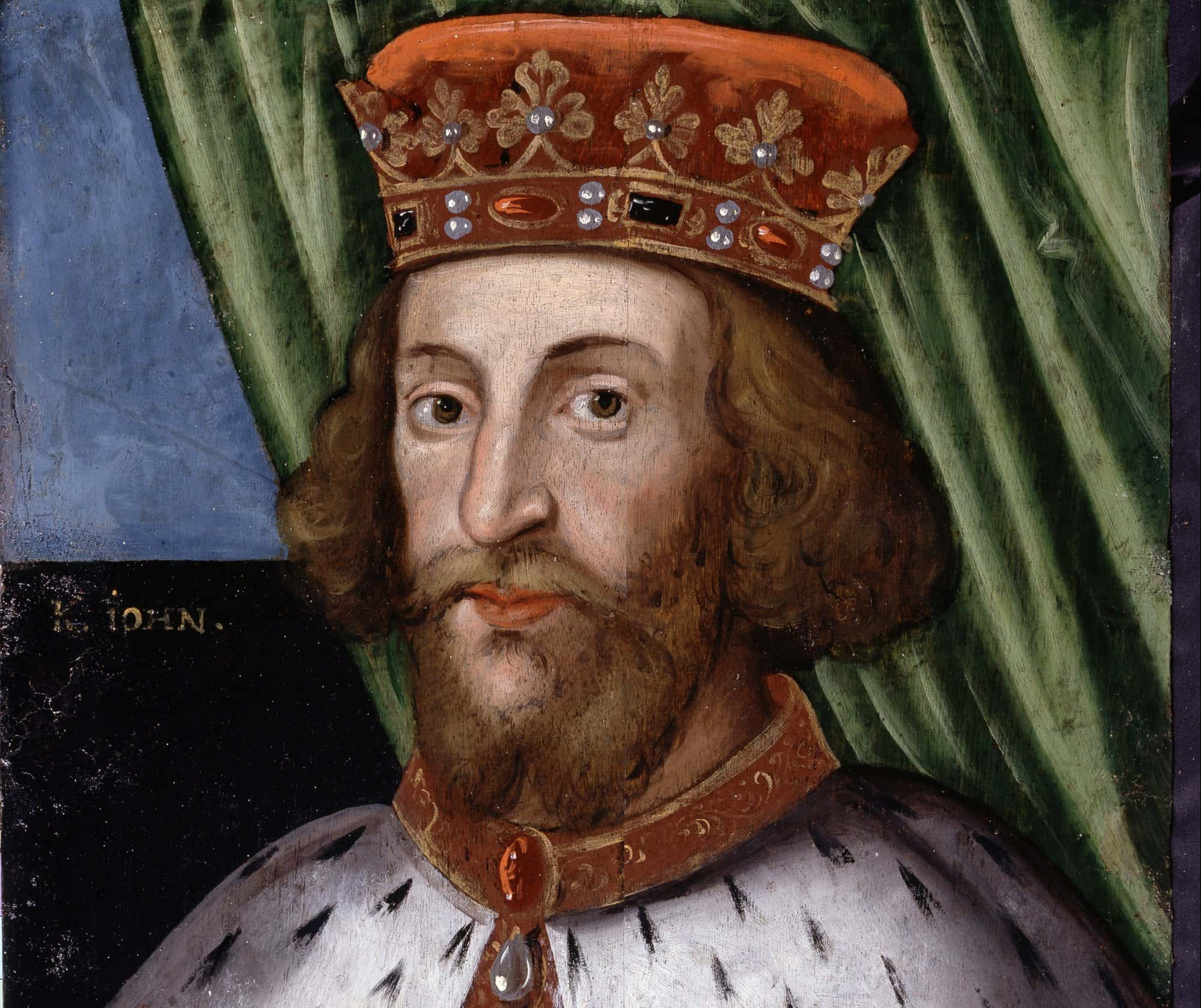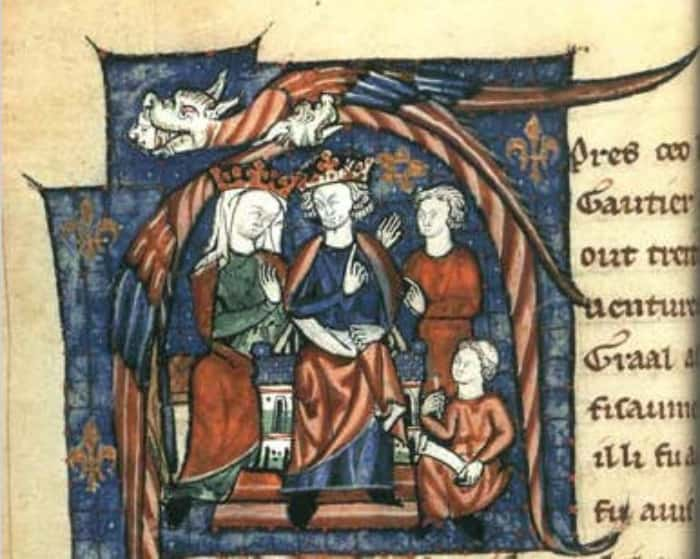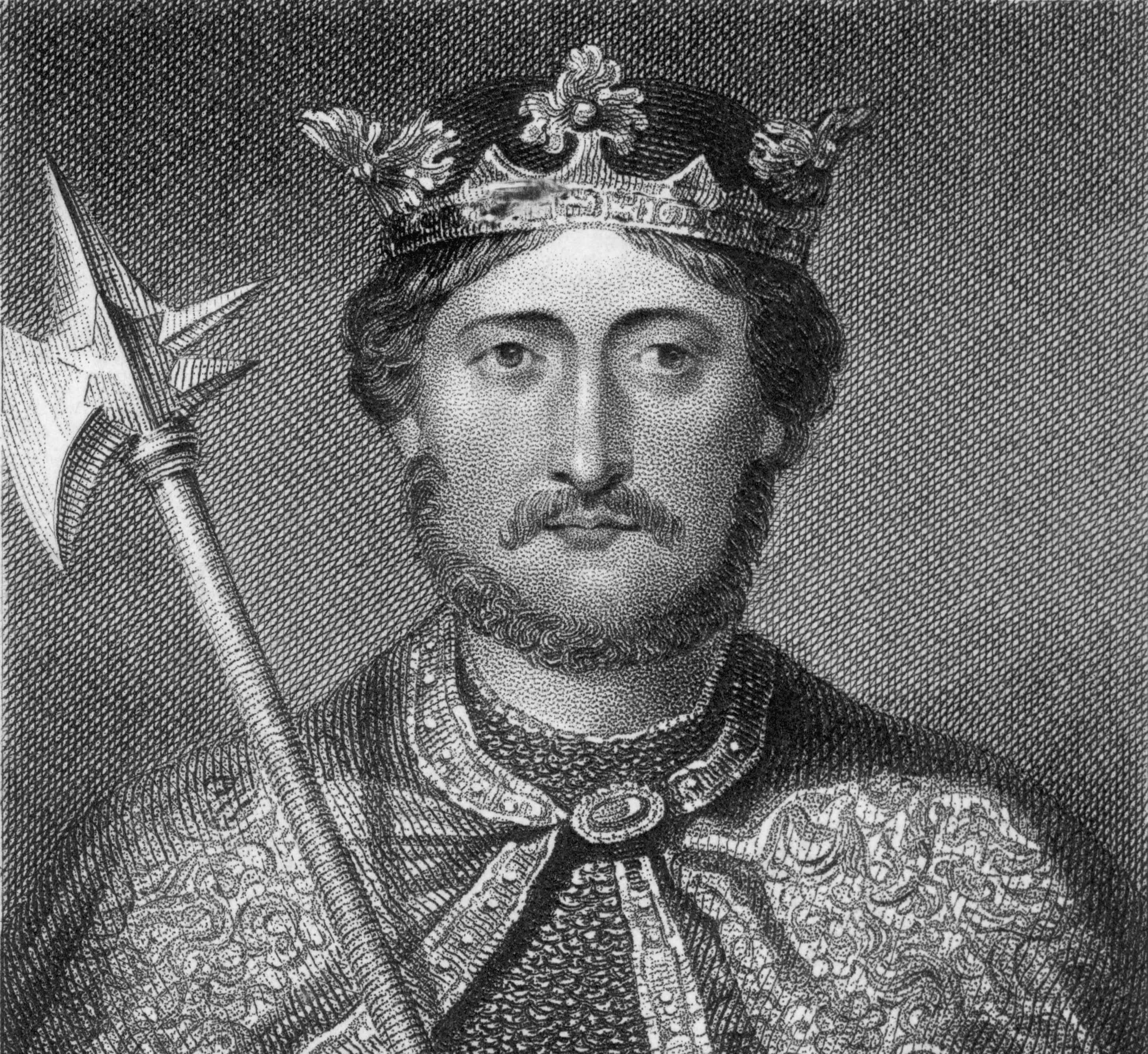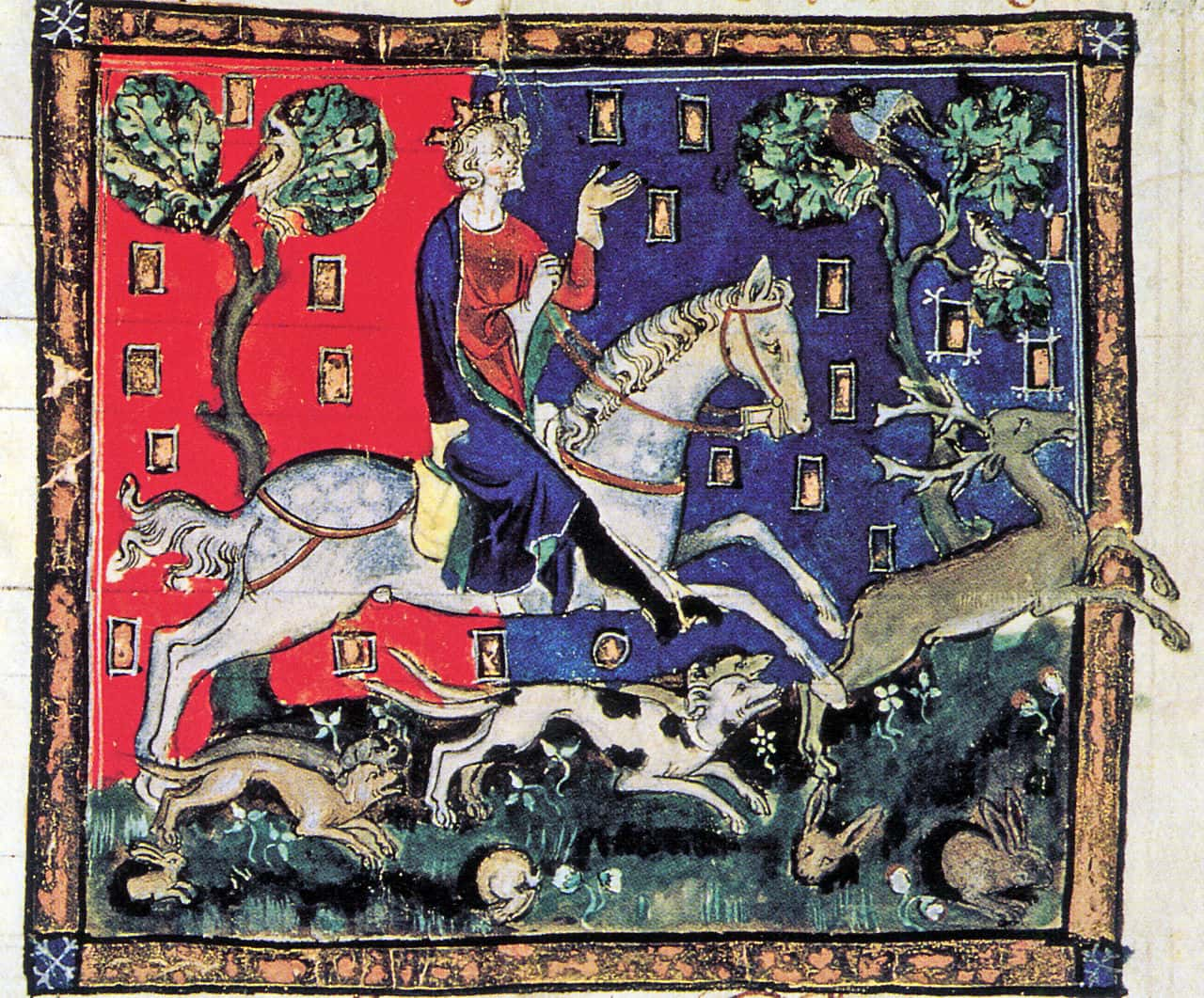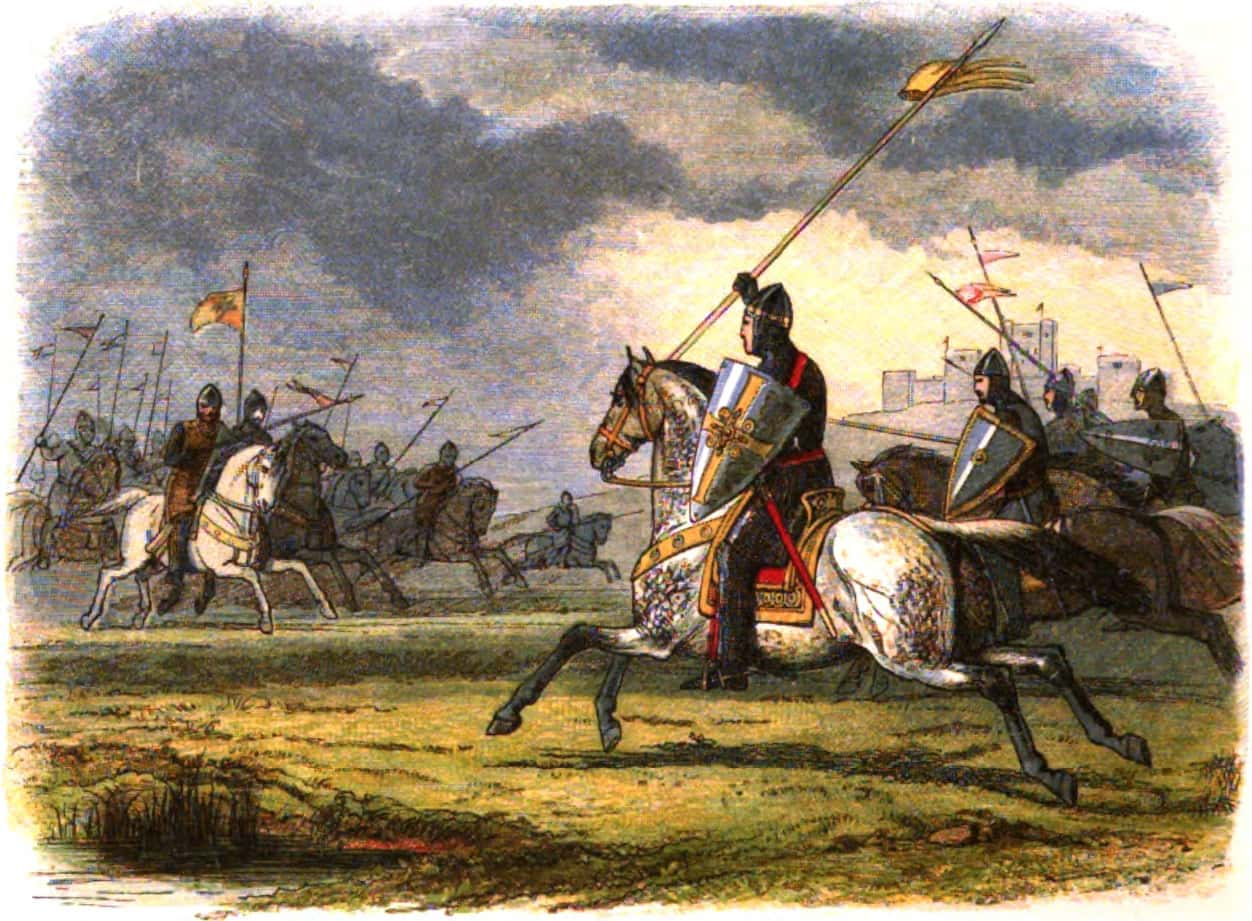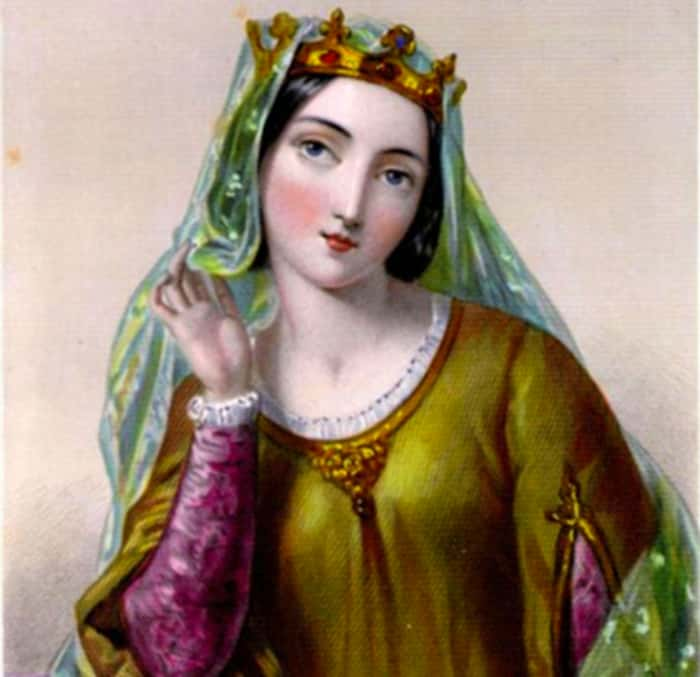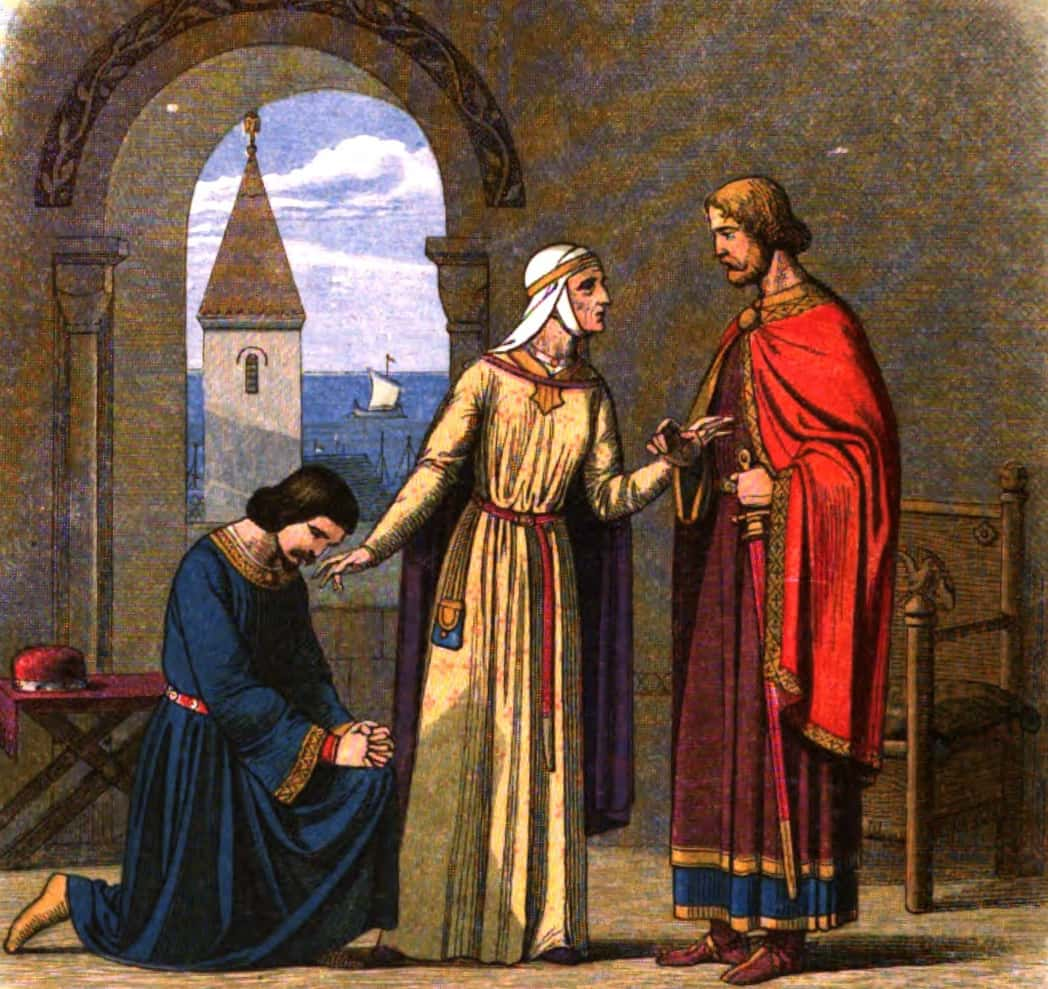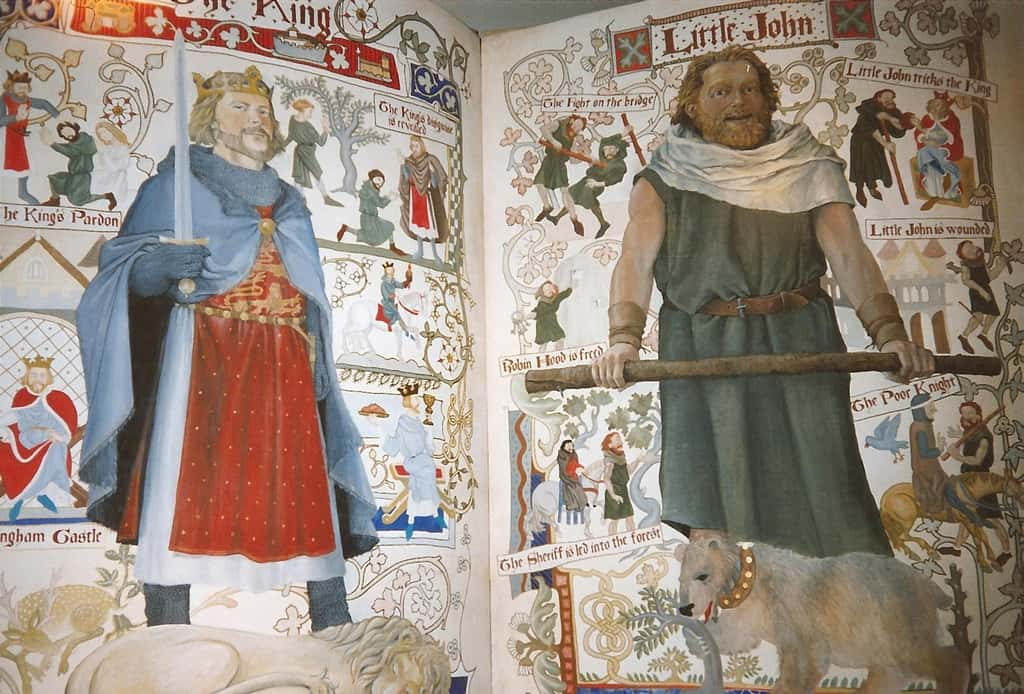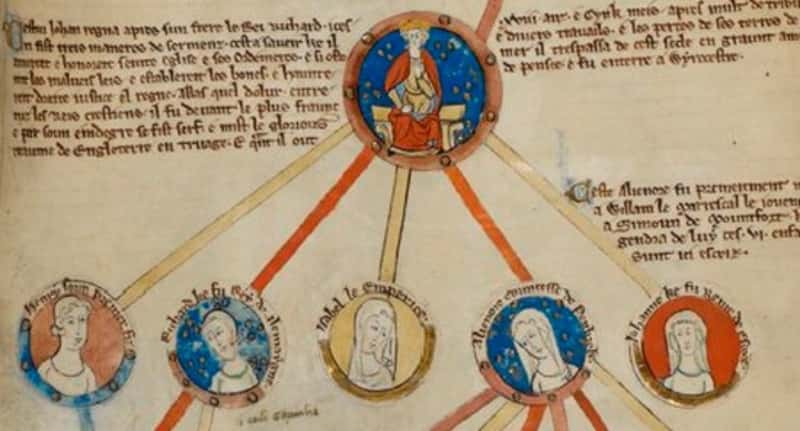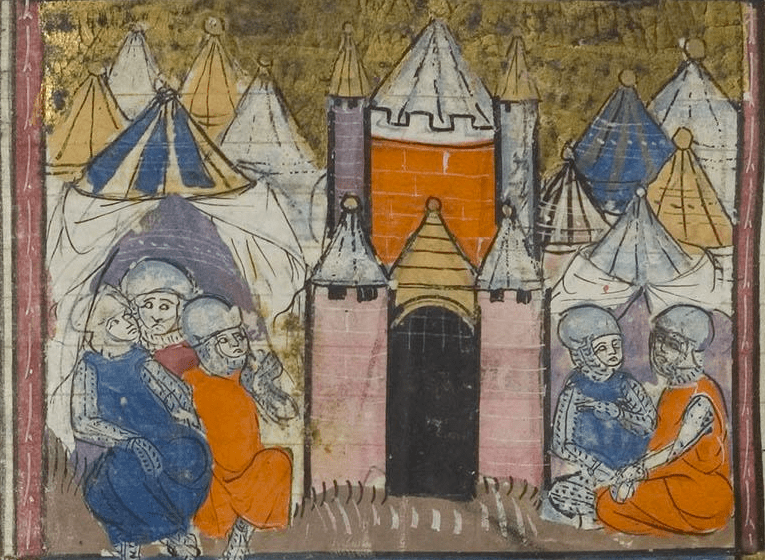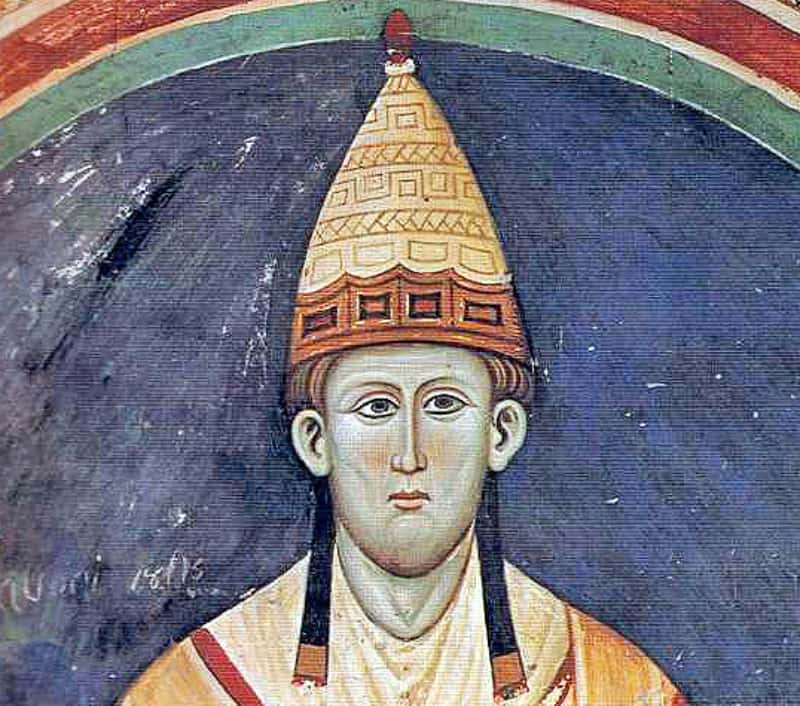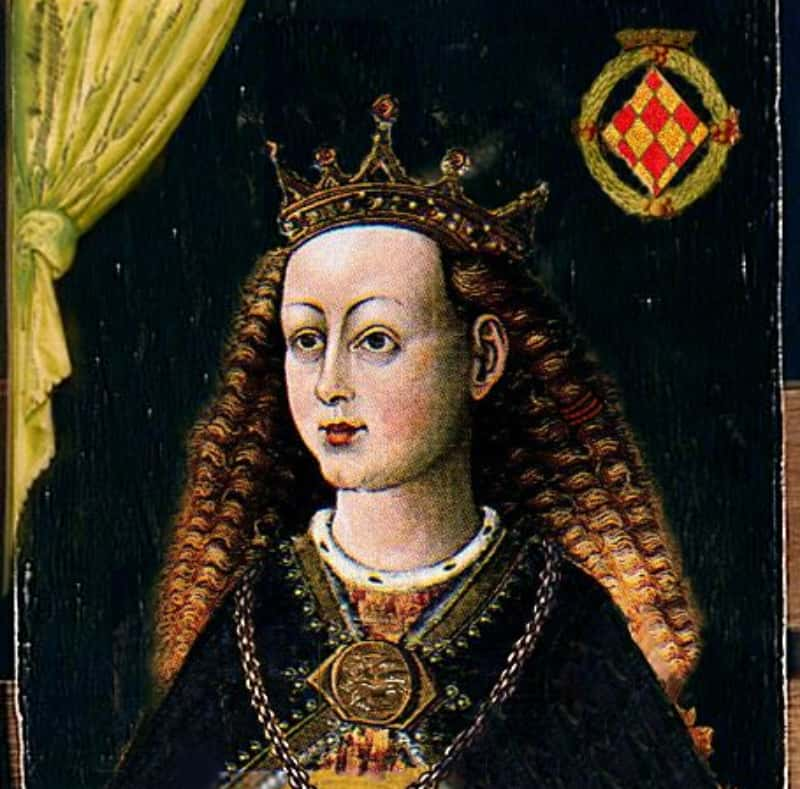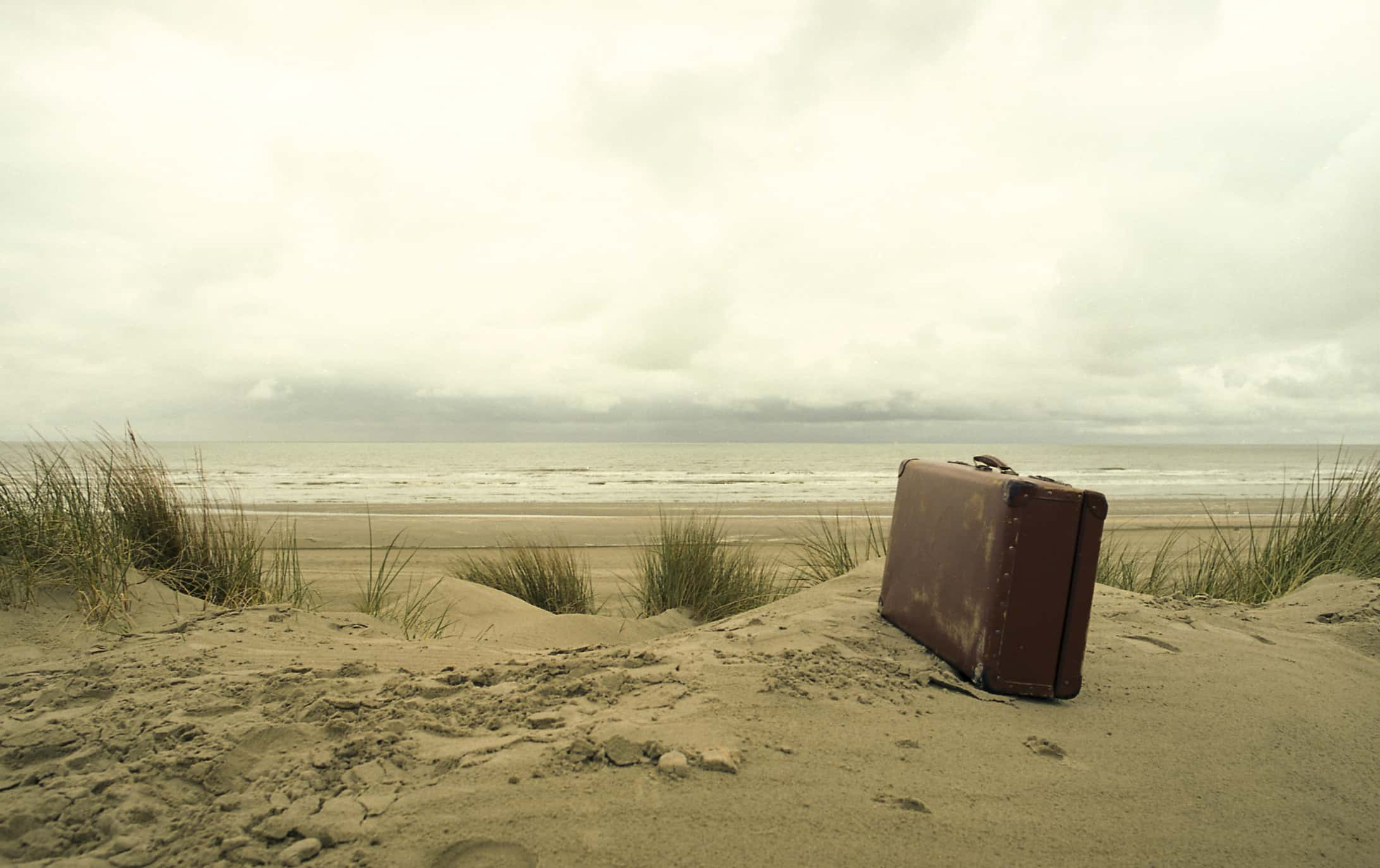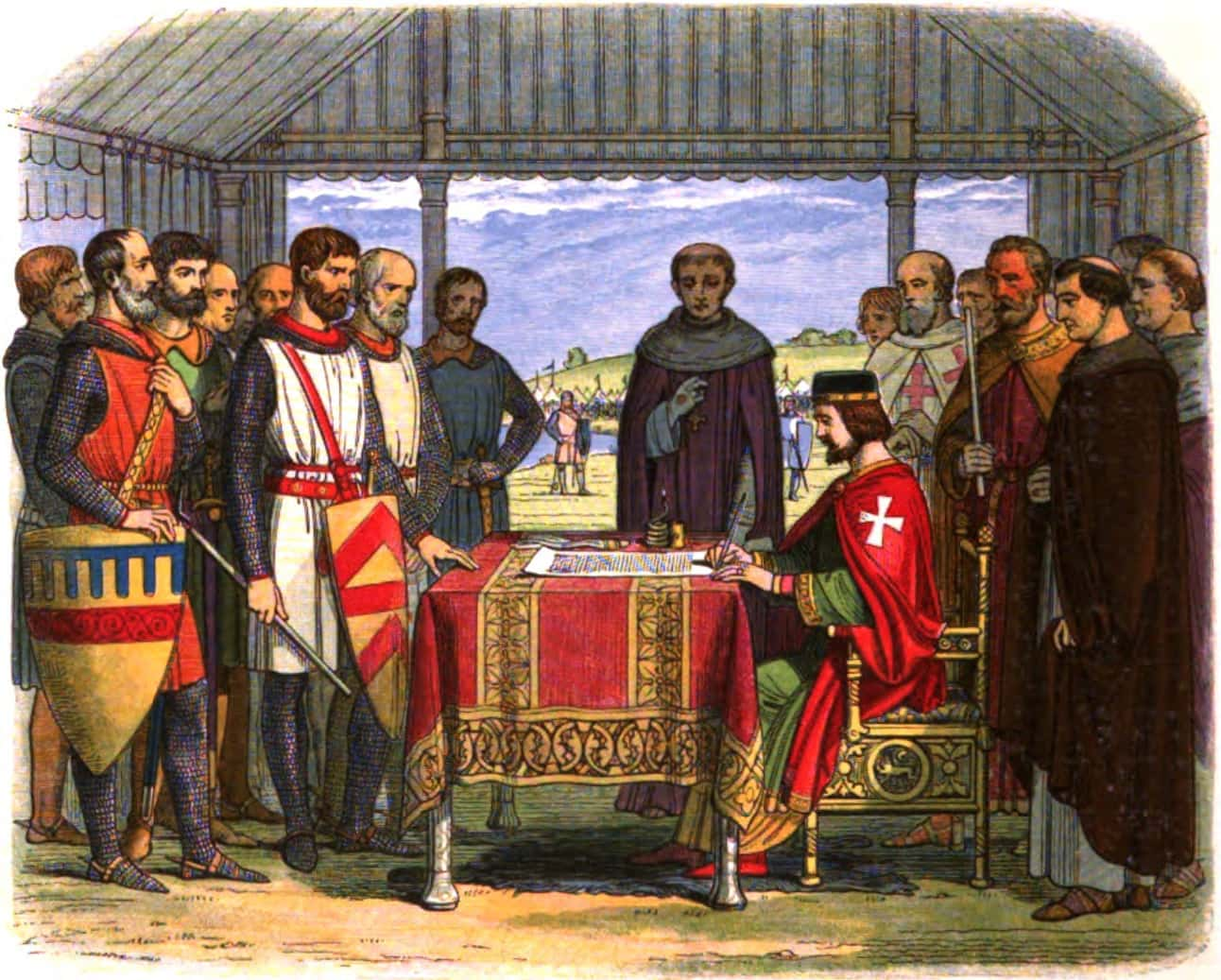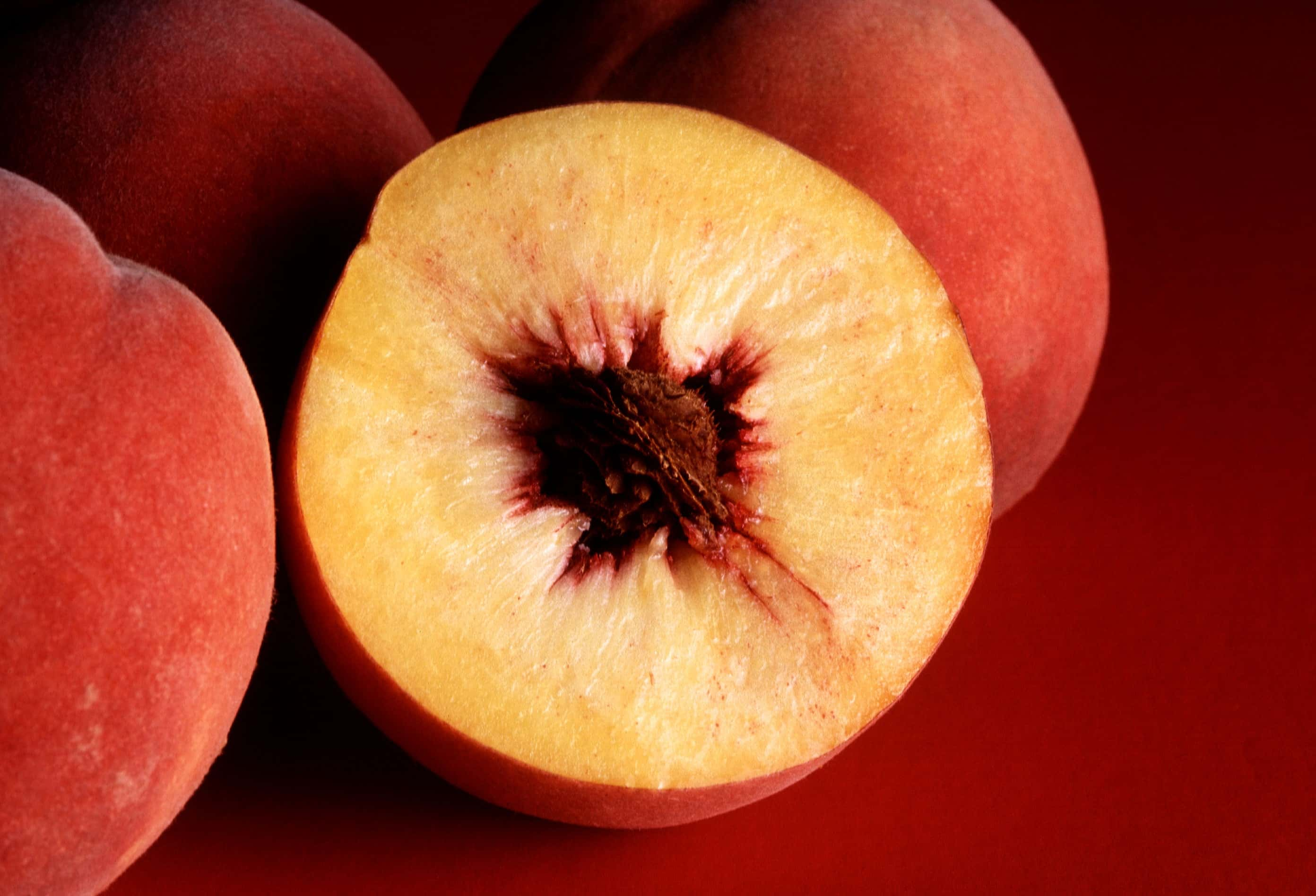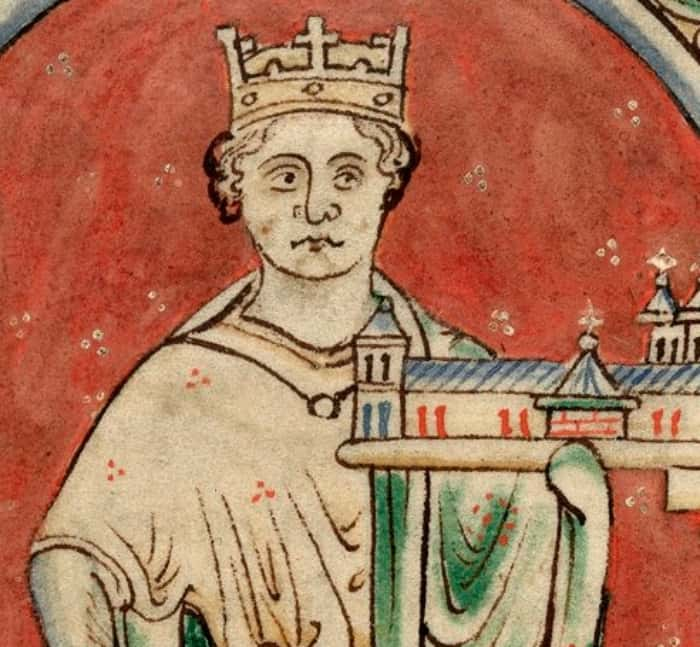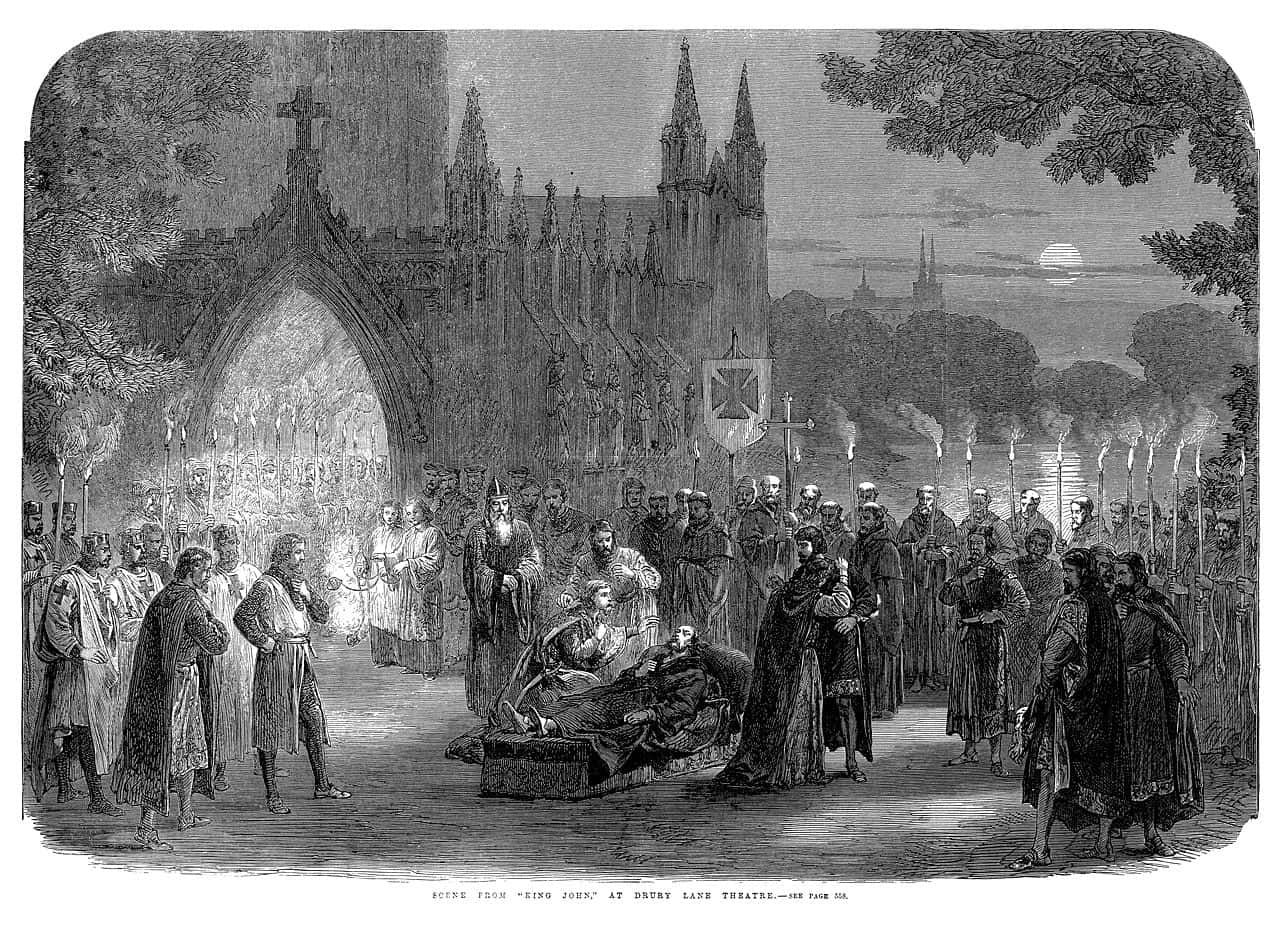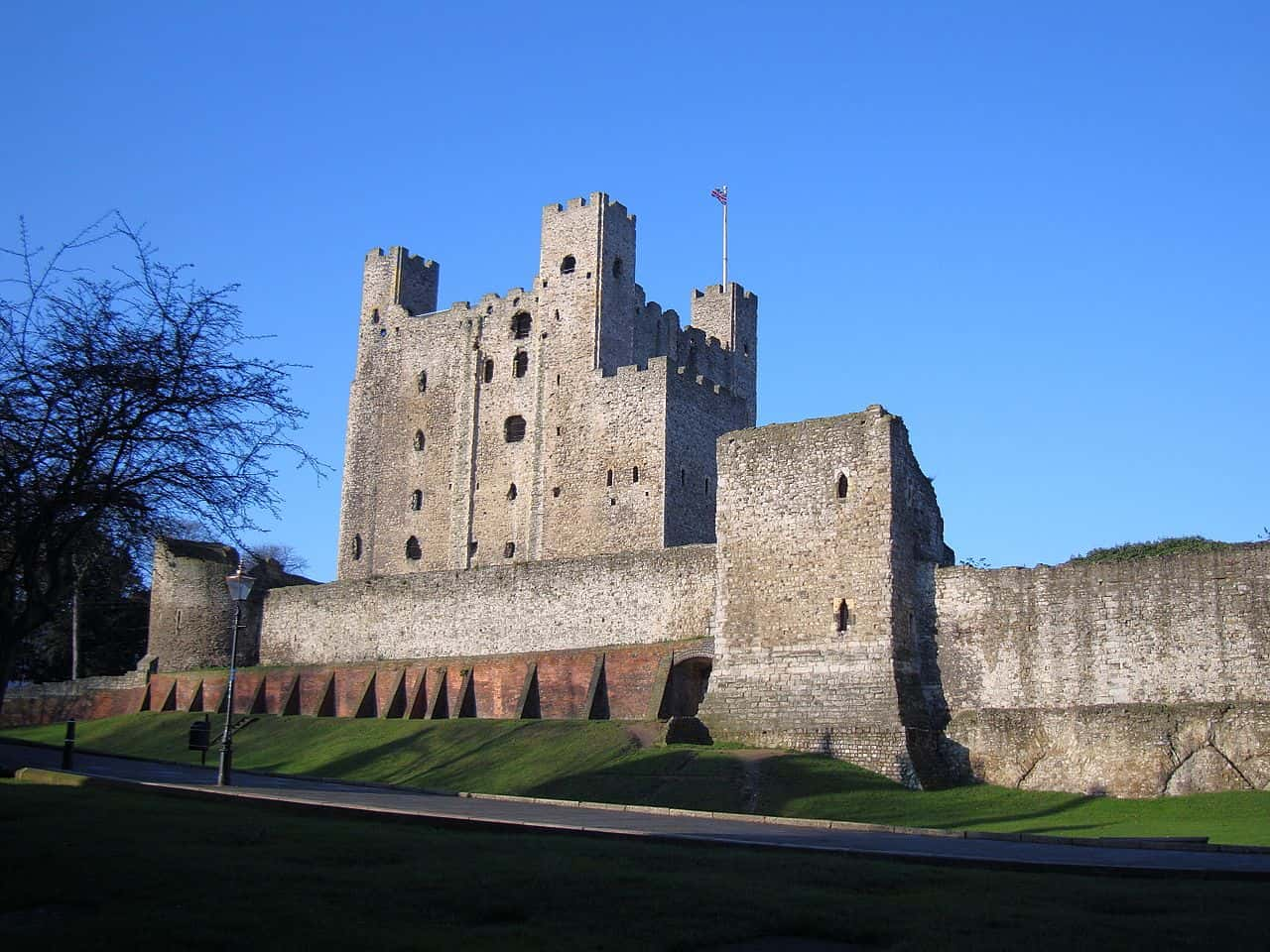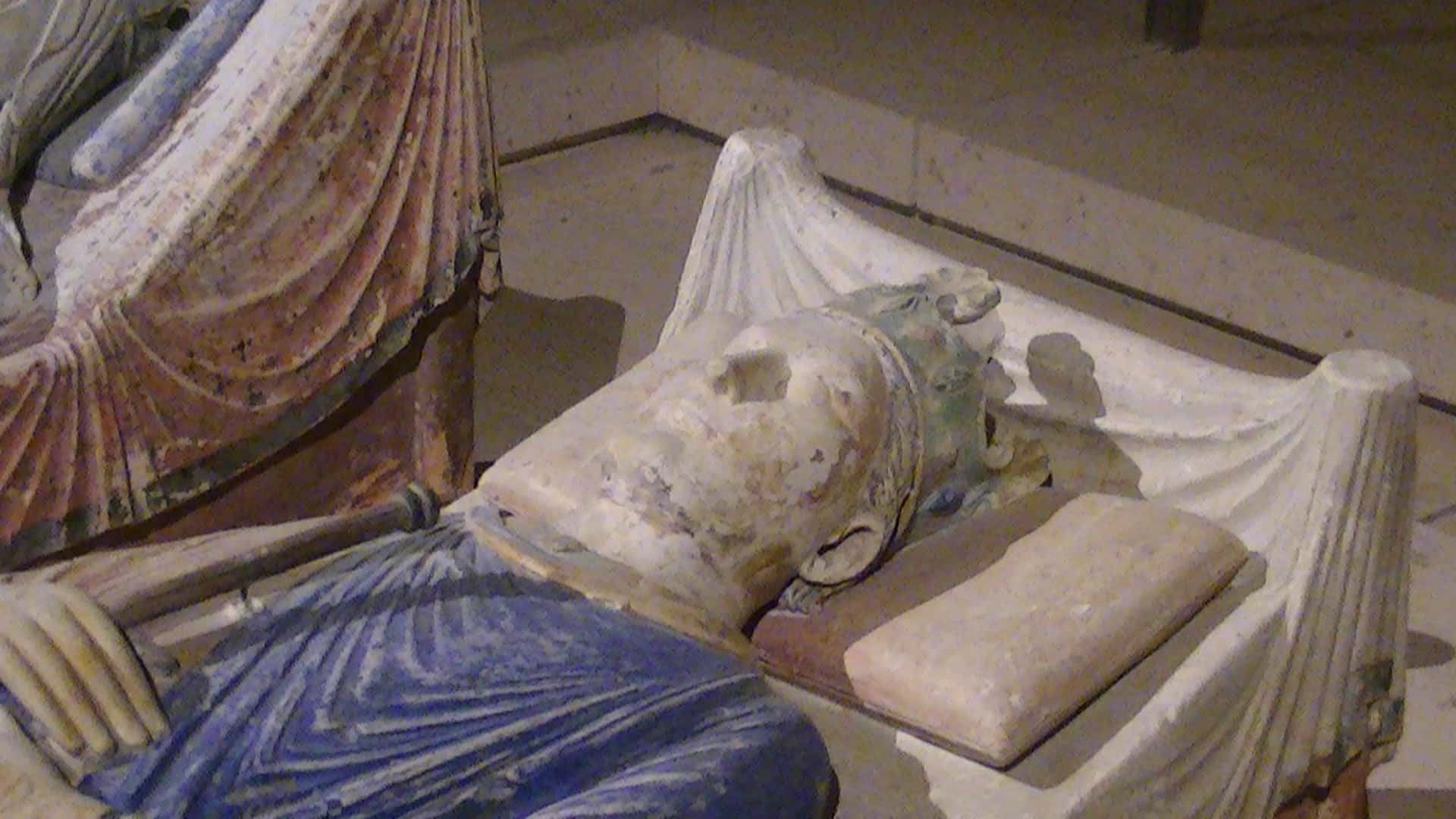Perhaps no other King of England, besides Richard III, has ever had such a low reputation as King John I of England. He has regularly been seen as villainous, incompetent, or both. He was the king who was made to sign the Magna Carta, which had far-reaching consequences, not least of which led to democracy replacing monarchy. So what did this king do which caused those around him to force him to limit royal power for years to come? Here are 42 corrupt facts about King John I of England.
King John Facts
42. The Runt
John was born on the Christmas Eve of 1166 in Beaumont Palace. He was the youngest of five sons born to King Henry II of England and Queen Eleanor of Aquitaine.
41. England or Angevin?
John’s father wasn’t just King of England; he had acquired land in Anjou and Normandy. He also had a claim on Aquitaine and parts of Southern France through his wife’s family. This territory on the European continent, combined with the kingdom of England, was collectively known as the Angevin Empire. However, because Henry II held much of his French territory only as a vassal of the French King, this made the Angevin Empire very fragile.
40. A Man for Church
When John was very young, he was put into the care of a wet nurse and sent to live at Fontevraud Abbey. The leading theory as to why this was done is that John, being the fifth son, stood to inherit nothing in terms of land, so life in the church was a good alternative. If that was his parents’ plan, though, it didn’t quite work out.
39. Long-Lasting Dynasty
John’s father, Henry II, was the first man of the House of Plantagenet to rule England—John himself would be the third man to do so. The Plantagenet family would go on to rule England for three hundred years, until the death of Richard III in 1485 at Bosworth Field.
38. Short Stature
According to the sources, John had very dark red hair and a “powerful, barrel-chested body.” However, this powerful body only stood 5’5” tall.
37. Stop Calling Me That!
As we mentioned already, John wasn’t set to inherit much since he had four older brothers. As a result, his father, Henry II, gave him the humorous nickname “John Lackland.” That moniker remained with John for the rest of his life.
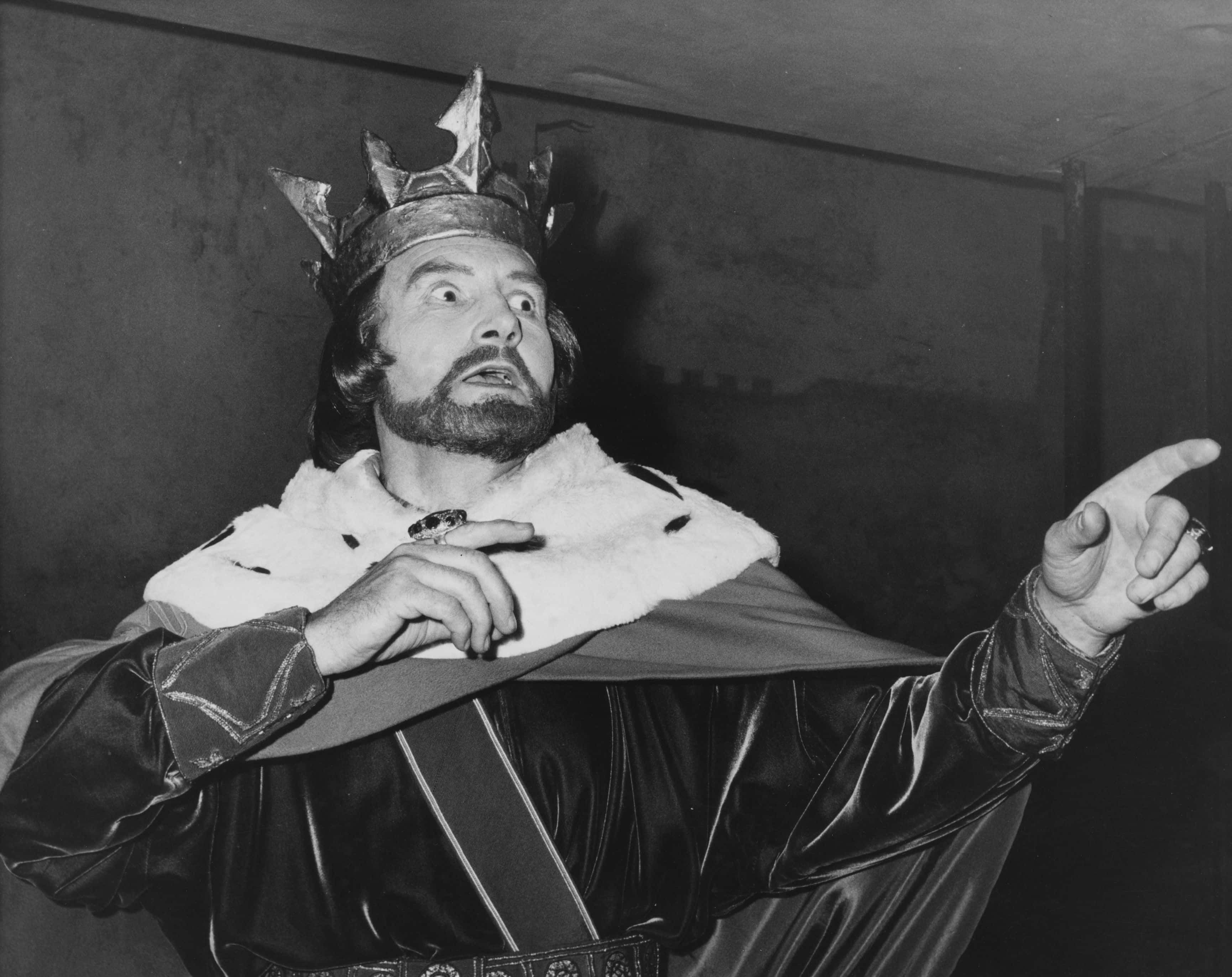
36. Ingrates!
Henry II, John’s father, wasn’t a very popular man. In fact, John’s own mother encouraged his older brothers to rebel against their father in 1173! Although they also allied themselves with the King of France, Henry still defeated this revolt in 1174. Meanwhile, John had remained loyal to his father and was given land, often taken from nobles who’d previously held them.
35. John the Sportsman
John was known to have been an enthusiastic hunter. Even in the Middle Ages, when there were fewer hobbies to choose from, John was devoted to blood sports. In fact, the only activity which captivated his interest more was gambling. Bizarrely, the game he liked to gamble most on was backgammon. What can we say, it was a different time.
34. Doesn’t the Squabble Ever Cease??
In 1183, another round of fighting came up in the dysfunctional Plantagenet family. Henry II’s oldest living son and heir, also named Henry, went to war with Richard, his younger brother.
When Henry died of dysentery during the conflict, his father named Richard his new heir, while John would take Richard’s title of Duke of Aquitaine.
In an incredible example of wanting to have his cake and eat it too, Richard refused to give up Aquitaine. Henry II sent his sons John and Geoffrey to bring their older brother to heel.
33. Nowadays it Would be a Reality Show!
In 1966, the playwright James Goldman presented The Lion in Winter. This play depicts a dramatized version of King Henry II’s maladjusted relationship with his family, including John.
Just two years after that, the play was adapted into a successful film of the same name, which garnered an Oscar for Katherine Hepburn and a nomination for Peter O’Toole.
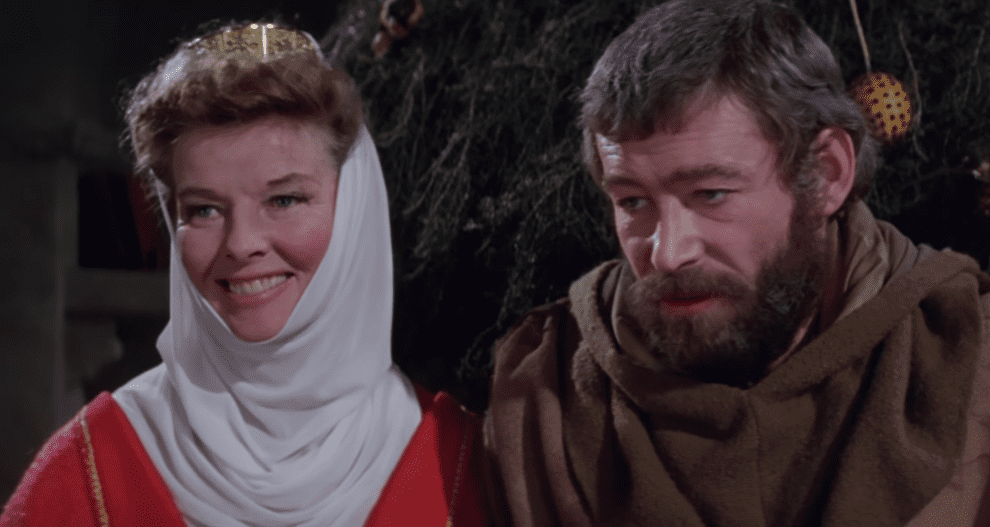 The Lion in Winter,Embassy Pictures
The Lion in Winter,Embassy Pictures
32. Would You Call That Nepotism?
Long before his father died, Richard had expressed the desire to go east on a crusade to the Holy Land. Taking a lesson from his father, Richard tried to buy the aristocracy’s loyalty before he left. As a result, John became the Count of Mortain and received land in Devon, Dorset, Somerset, and Nottingham.
31. Old Foes, New Friends
One rare highlight of John’s military career was when he discovered that the Scottish were planning an alliance with France against England. In 1209, John acted first by invading Scotland.
King William was forced to sign the Treaty of Norham, which had him yield his daughters as hostages to John and pay 10,000 pounds to boot. This proved too costly of a price; William’s enemies were emboldened enough to try and overthrow him. In a case of near comedic irony, John had to reinvade Scotland in 1212 to defend William’s throne!
30. Dude… This is Creepy
It’s unknown just how old Isabella of Angouleme was when she became John’s second wife, but the historical records of the time all maintain that she was absurdly young to get hitched—and this was the Middle Ages, mind you.
Estimates put her age “at most 15 and more probably towards nine years old at the time of her marriage.” Keep in mind that the 34-year-old King had put aside his first marriage just to marry her instead. We never thought we’d find a King of England who could make Henry VIII’s track record look slightly better by comparison!
29. Keep the Peace, Damnit!
Predictably, a power struggle emerged in England while Richard I was on his crusade. John had promised his brother that he'd stay out of England for three years.
Of course, when public opinion turned against the regents in charge of England, John and Richard’s mother persuaded Richard to let John go in and try to keep the peace.
28. Setting the Precedent
Instead of keeping the peace, John made his own bid for the throne. He took advantage of Richard’s long absence by declaring that Richard wasn’t coming back. This claim would later become a central plot point in every version of Robin Hood you’ve ever heard—more on that later.
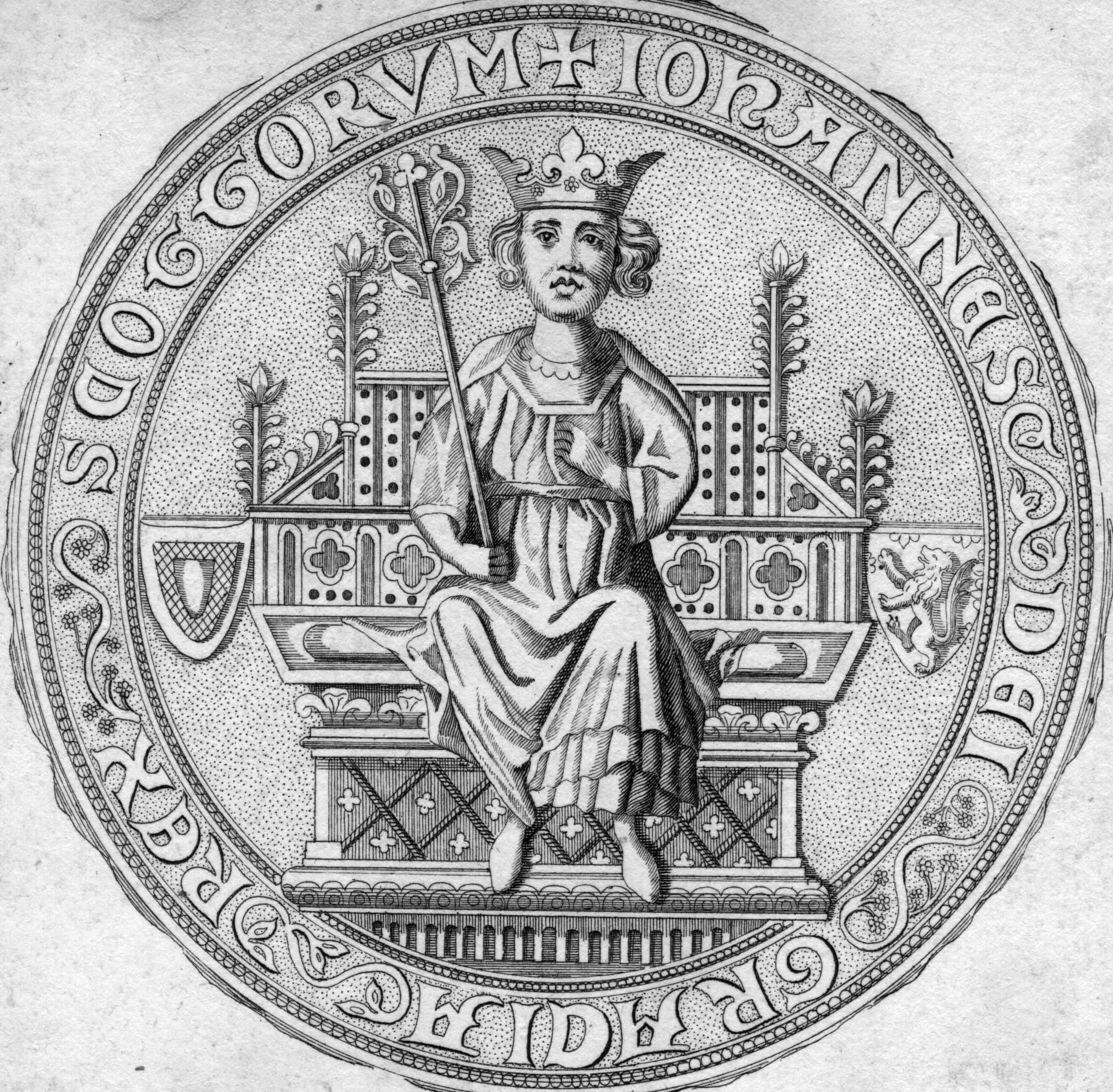 Getty Images
Getty Images
27. Awkward Negotiations
To double down on this deceit for the throne, John traveled to France and made a deal with King Philip to marry his sister, Alys, in exchange for an alliance. Keep in mind that John would have had to put aside his then-wife, Isabella of Gloucester. Imagine that conversation!
26. Why Bless Your Heart, Little Brother
John’s brother, King Richard I, did eventually return to England in 1194, just as fighting had broken out between John’s followers and those loyal to Richard. John fled England, but his brother followed him to Normandy.
Amazingly, Richard forgave John, stating that he was just “a child who has had evil counselors.” Keep in mind that John was 27 at the time, so maybe Richard was being a bit passive-aggressive.
25. Bad Prince John
John’s most lasting legacy is arguably his role as the primary antagonist in the legends of Robin Hood. First appearing in the 14th century, these stories of the famous outlaw usually take place during the reign of King Richard when he was absent from England, and John ruled as regent.
As a result, he has frequently been portrayed in media as a villainous character, be it comedic, sinister, or as an animated lion.
24. Spinoff Character
In the 19th century, the Walter Scott novel Ivanhoe took culture by storm as a throwback to the Middle Ages. Since the book featured Robin Hood, John was also included. Once again, he is portrayed in a less-than-favorable light. Ivanhoe has been adapted many times, further cementing John’s low reputation.
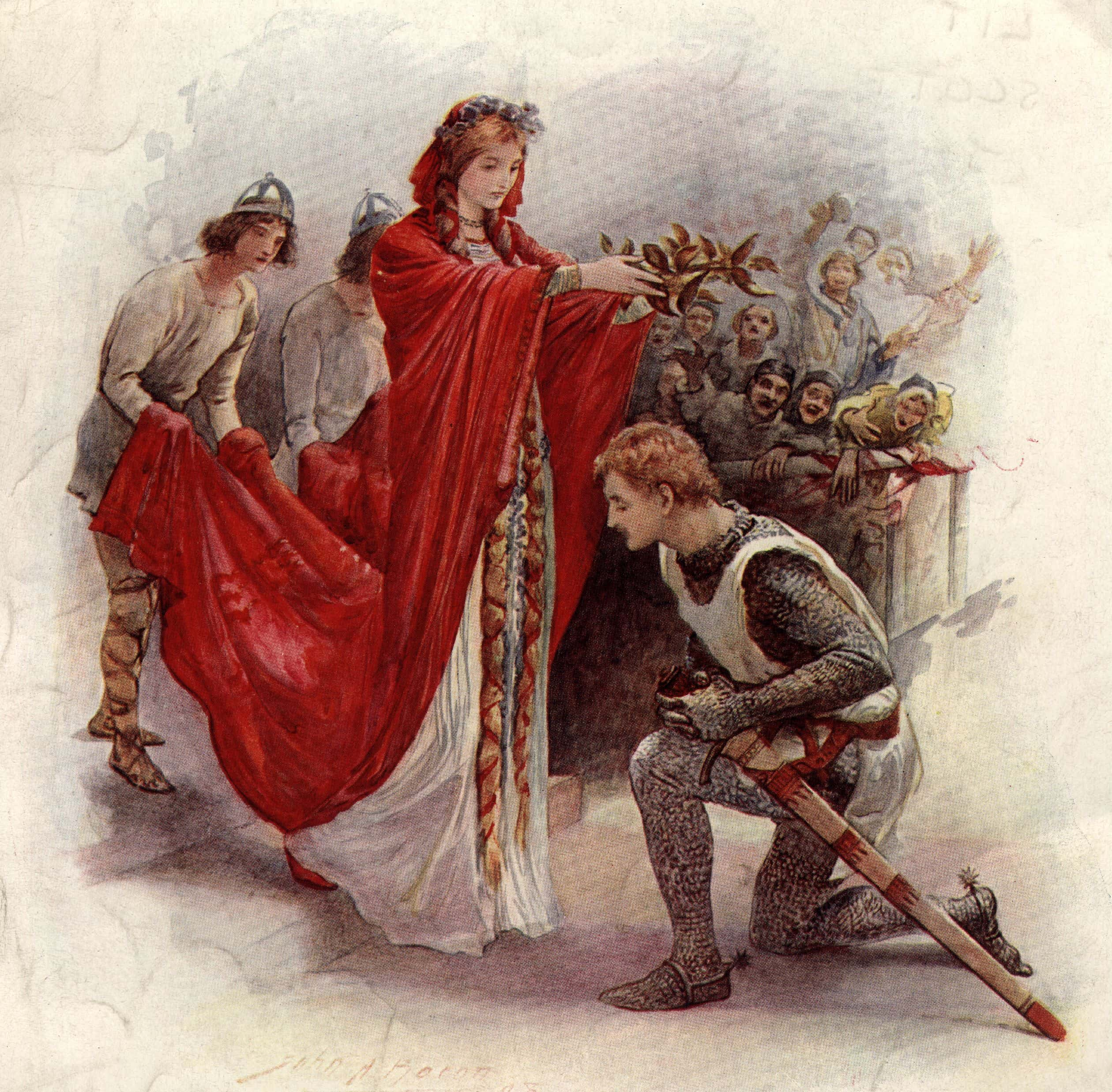
23. King Hoarder
John was known to collect things that interested or fascinated him. Rare for his time, John was an avid reader and made sure to bring a large number of books with him wherever he went. John also loved jewels; he would amass a collection of precious stones to the point where he was known as a “connoisseur of jewels.”
22. Rising High in the World
John had five children with Isabella of Angouleme before his death. His eldest son became King Henry III after John died. His daughters Joan and Isabella became the Queen of Scotland and the Holy Roman Empress, respectively.
21. In Defiance of Future Stereotype
After Richard returned from the Crusades, he immediately went back to war against his former ally, King Philip of France.
John would actually redeem himself to his older brother during this time. In 1195, John led the siege against Evreux Castle. His military contributions led Richard to restore John as Count of Mortain.
20. And Featuring…
Many actors have played King John in the films and television series that have adapted Ivanhoe and Robin Hood. These include Peter Ustinov, Edward Fox, Ian Holm, and Oscar Isaac.
 Getty Images
Getty Images
19. The Clouds Burst
When King Richard I died in 1199, there were two legitimate claimants to England’s throne: his nephew, Arthur of Brittany, and his brother John. There was legal precedence for either one succeeding Richard, and they both had supporters. This led to many years of conflict beginning in Normandy shortly after Richard’s death.
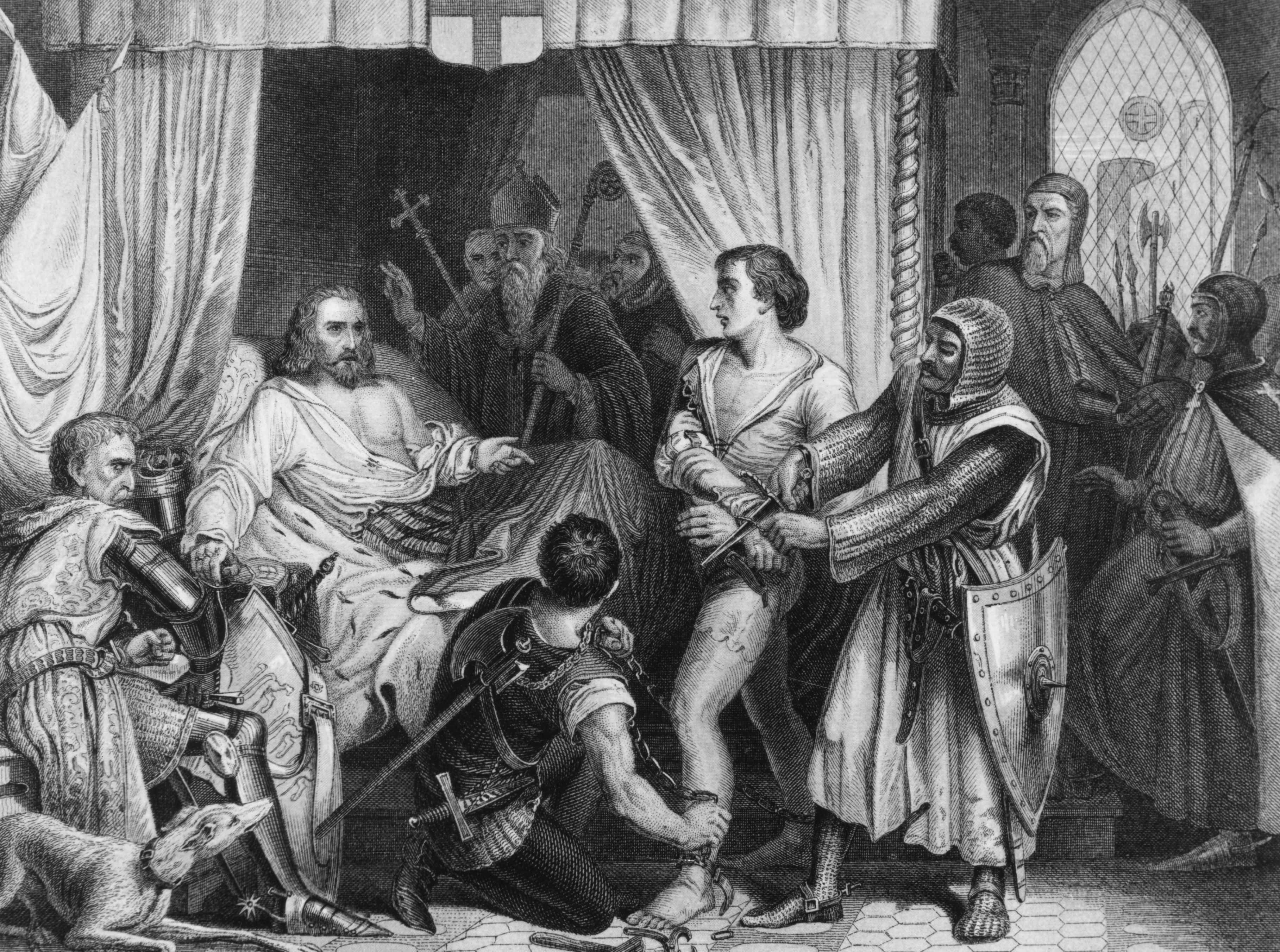
18. Premature Promotion
In 1177, John was appointed Lord of Ireland by his father at the age of ten. Some theories state that he was rewarding the one son who hadn’t rebelled against him by that point. Maybe wait for him to start sprouting some chin hairs?
17. Unbiased History?
When push came to shove, John didn’t have his success at war. In 1200, he made a settlement with King Philip of France with the Treaty of Le Goulet. In exchange for Philip withdrawing his support for Prince Arthur and recognizing John as the heir to Richard’s lands in France, John acknowledged Philip as his overlord in said French territories. This was poorly received in England, to put it mildly: King John gained the nickname “Softsword” among some historians as a result.
16. Convenient Loophole
In 1200, John really did set aside his first wife to marry again. He argued that he and Isabella of Gloucester were cousins. A marriage between cousins would have required permission from the Pope.
Since no such permission had been requested or received, the marriage was as good as void. If there’s one thing we can learn from English monarchs, it’s to always make sure there’s a loophole in your first marriage.
15. Who’s the Boss?
Throughout his reign, John had a strained relationship with the Pope. Putting aside his breakup with his first wife, he also quarreled bitterly with the Pope in the 1200s. Upon the death of the Archbishop of Canterbury, John wanted to choose his successor, but the Pope was adamant that the Church should be a parallel power rather than being subservient to any one king.
The dispute was so serious that at one point, John was excommunicated until he agreed to submit England and Ireland to the Papacy!
14. What a Woman!
Despite the deal with the French to marry the king’s sister, that wasn’t who John married as his second wife. Instead, he married another Isabella! This new wife was Isabella of Angouleme.
It remains unknown why John went through all that trouble to marry again, though some historians would later maintain it was Angouleme’s beauty. She was even compared to Helen of Troy!
13. Touring Monarch
While Henry II and Richard I had spent almost no time at all in England, John was far more involved as a king—though this was partly due to the fact that England was all he had after his failed campaigns.
John would travel around England with a court which dealt with local and national issues wherever they went. John even made sure to visit regions of England that had been neglected and ignored by the kings of the past.
12. No British Actors Available?
Aside from the actors who have portrayed John in the many Ivanhoe and Robin Hood films over the years, Paul Giamatti played the role in the war film Ironclad. The film depicts King John’s siege of Rochester Castle, which took place during the First Barons’ War.
 Ironclad, VIP Medienfonds 4
Ironclad, VIP Medienfonds 4
11. Now it’s on!
John’s wars with France during his reign led to a serious alienation between himself and many of his barons, especially in the North of England. The failure of John’s campaigns was the last straw. In 1215, the barons organized a rebellion and seized several regions, including London.
10. So it Begins
John and the barons were eventually brought together at the negotiating table in 1215 after several months of conflict. A Great Charter was created as a result of their meeting, which limited royal power for good. Known as the Magna Carta, it “promised the protection of church rights, protection from illegal imprisonment, access to swift justice, new taxation only with baronial consent and limitations on scutage and other feudal payments.”
9. Downfall
John died on the evening of October 18, 1216. To this day, it’s not completely certain how John died. He suffered from dysentery in the last part of his life, which many say proved was what ultimately killed him.
However, histories of the time put the blame on poisoned fruit—the most common claim was that he died from “a surfeit of peaches.” That’s one way to go!
8. A Positive Pawn
One of the rare times where John was portrayed in a positive light was the sixteenth-century play King Johan. Written by John Bale, the play takes a very strong pro-Protestant and anti-Catholic viewpoint.
King John is retroactively praised for his opposition with the Pope, even though it would have been impossible for John to be a Protestant. Bale just really wanted to give the papacy a spit in the eye!
7. How the Mighty Do Fall
Believe it or not, William Shakespeare wrote a play about John. Named after the former king, King John presents a condensed summary of John’s life, starting with his battles against Prince Arthur.
While King John was one of Shakespeare’s most popular plays during the Victorian era, it has since become one of the least popular.
6. Will You Accept a Cheque With That Apology?
Rare for the time, King John was noted as behaving very apathetic towards religion. He would neglect taking communion, publicly joke about church doctrine, and make blasphemous comments.
To be fair, he was also recorded as making up for his big mouth by making charitable donations. This tradition is practiced by politicians and celebrities to this day!

5. So… You Lost Normandy?
John continued to face trouble from his nephew, Prince Arthur, even after his throne was secured in the 1200s. The peace treaty he signed with King Philip of France only lasted until 1202, when he again supported the rebellious prince.
While John initially won victories against Philip and Arthur, the campaign costs proved too much, and John also lost allies due to the cruel treatment of prisoners.
He was eventually forced to cut his losses and retreat to England in 1204. By that point, the only land he controlled on the mainland of Europe was Aquitaine.
4. What a Nice Uncle
Despite his massive losses, John did gain one victory with the capture of his nephew. Prince Arthur was taken prisoner, along with all his generals, at the Battle of Mirebeau.
John’s mistreatment of them was such that 21 rebel leaders died in captivity. Arthur’s fate is unknown, but the generally accepted theory is that he was murdered on John’s orders.
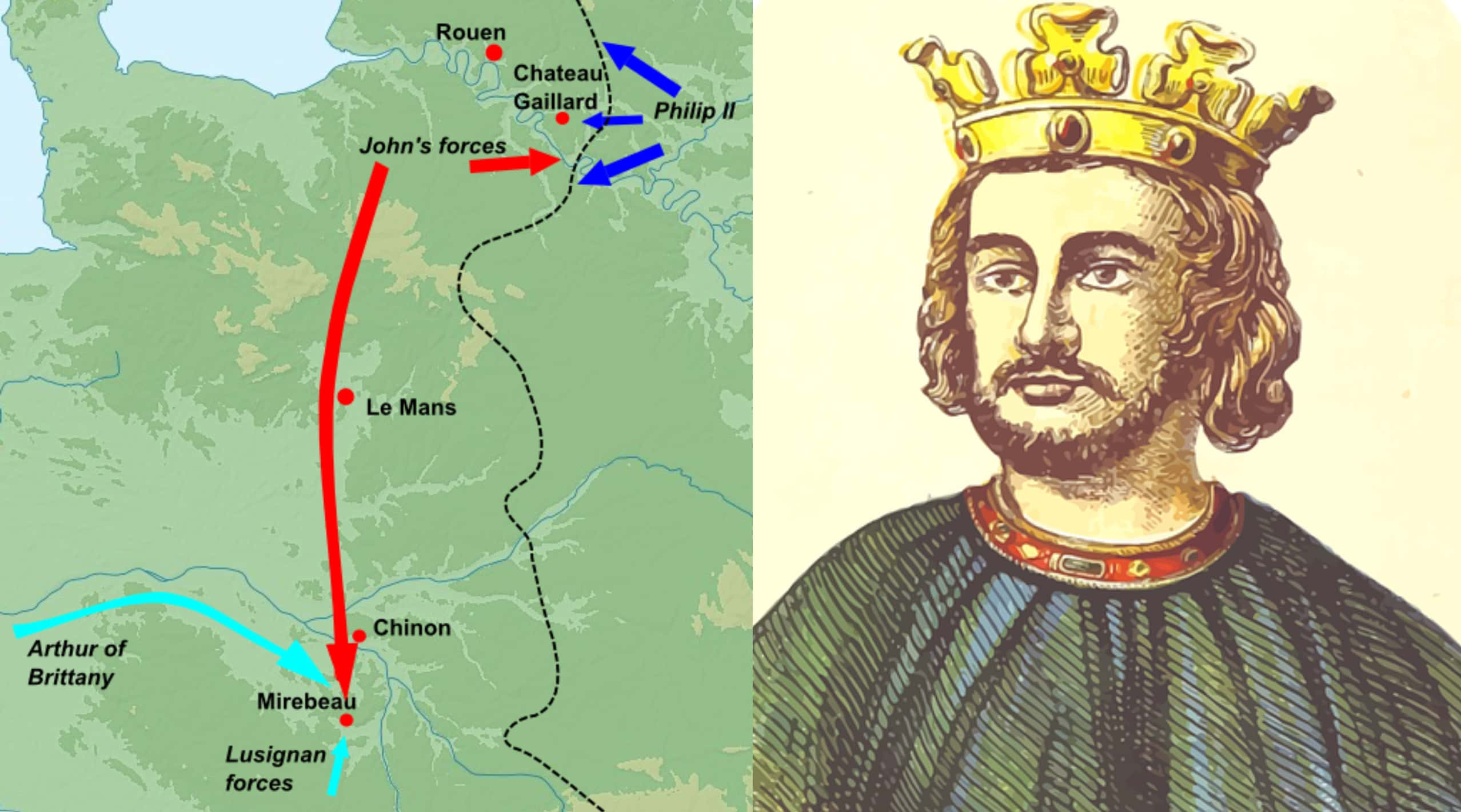
3. The Sins of the Sons
For most of his life, John remained loyal to his father when all his brothers rebelled for one reason or another. However, in the later 1180s, when Richard and the King of France warred with Henry II, John sided with Richard for once.
When the ailing Henry II found out, it was said that this last betrayal gave Henry such a shock that he physically collapsed. He remained feverish and barely lucid, dying soon after.
2. A Man of Extremes
John’s temperament was said to be mercurial in nature. While he was able to be “witty, generous, and hospitable” at times, he was also said to become so angry that he would “[bite] and [gnaw] his fingers.”
1. Not Cool, Bro
According to historical records of the time, John was known to have several mistresses. While this wasn’t uncommon among kings—shocker, we know—John took it a step too far by choosing noblewomen who were already married for his extramarital romps. This kind of behavior made John many enemies who later made exaggerated accusations in order to justify their actions against him.

